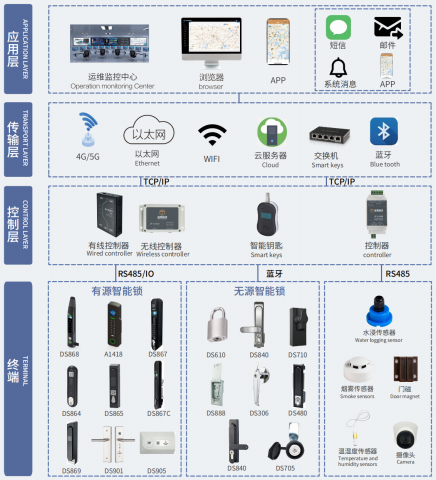In the management of key areas such as industrial equipment, urban public facilities, and financial assets, the traditional lock control mode has long been confronted with pain points such as "high reliance on manual labor, slow response speed, and numerous safety hazards". The emergence of the intelligent lock control management platform, through the deep integration of technologies such as the Internet of Things and big data, has provided various industries with a transformation path from "passive management" to "active intelligent control".
I. Three Major Predicaments of Traditional Lock Control
Before the popularization of intelligent lock control management platforms, various industries were confronted with three major predicaments: First, high labor costs and low efficiency. For instance, power cabinets and street lamp boxes relied on manual inspection and unlocking, with records prone to omissions and equipment abnormalities difficult to detect in a timely manner. Second, security protection is weak, risks are difficult to control, mechanical locks are easy to be copied or cracked, there is a lack of a traceability mechanism for unlocking records, and illegal operations are hard to hold accountable. Thirdly, the equipment is scattered, and the monitoring is lagging behind. Managers cannot grasp the equipment status in real time, and the response to faults is delayed, which affects business continuity.

Ii. Jinfu Intelligent Lock Control Management Platform
In response to the above pain points, the Jinfu Internet of Things (iot) lock Control System is a security access control system based on iot technology. It consists of a mobile phone APP, electronic keys, intelligent electric control locks, intelligent passive locks, key managers, lock controllers, and management system software. It can manage authorization and monitoring through remote centralized management, reduce power consumption of unattended operations, and achieve intelligence, maintenance-free, and minimal maintenance. The system supports local private deployment and has opened up multiple northbound interfaces to the public, making it easy to integrate into third-party business platforms.
In addition, the platform supports role permission design and navigation interface customization. It can adjust functional modules according to the different user needs of power enterprises, banks, transportation departments, etc., and has extremely strong adaptability.

Iii. Application scenarios with full coverage
The Jinfu intelligent Lock control management platform significantly enhances efficiency and security in multiple key areas. In the power industry, the integration of smart locks and GIS has reduced the fault response time to the minute level and increased the rate of equipment anomaly detection by 90%. In smart city applications, remote monitoring and intelligent early warning have reduced inspection costs by 70%. Through platform management in the communication and transportation sectors, illegal intrusions have been reduced by 85%, and operation and maintenance efficiency has increased by over 60%. In the financial and railway scenarios, intelligent lock control ensures operation records and prevents unauthorized opening, guaranteeing transportation safety.

Iv. Significant Meaning: Promoting the transformation of the industry towards intelligence
The implementation of the Jinfu intelligent lock control management platform not only resolves the long-standing and difficult issues of traditional lock control but also becomes a key driver for the intelligent transformation of various industries. It has achieved cost reduction and efficiency improvement by replacing manual inspection with remote centralized management. Meanwhile, multi-method unlocking and operation log traceability have established a dual protection network of "technology + management", enhancing the security factor of important assets by an order of magnitude. More profoundly, the data accumulated by the platform, such as equipment status and unlocking records, provide a basis for enterprises to optimize operation and maintenance strategies and conduct predictive maintenance, promoting the upgrade of management from "experience-driven" to "data-driven".



